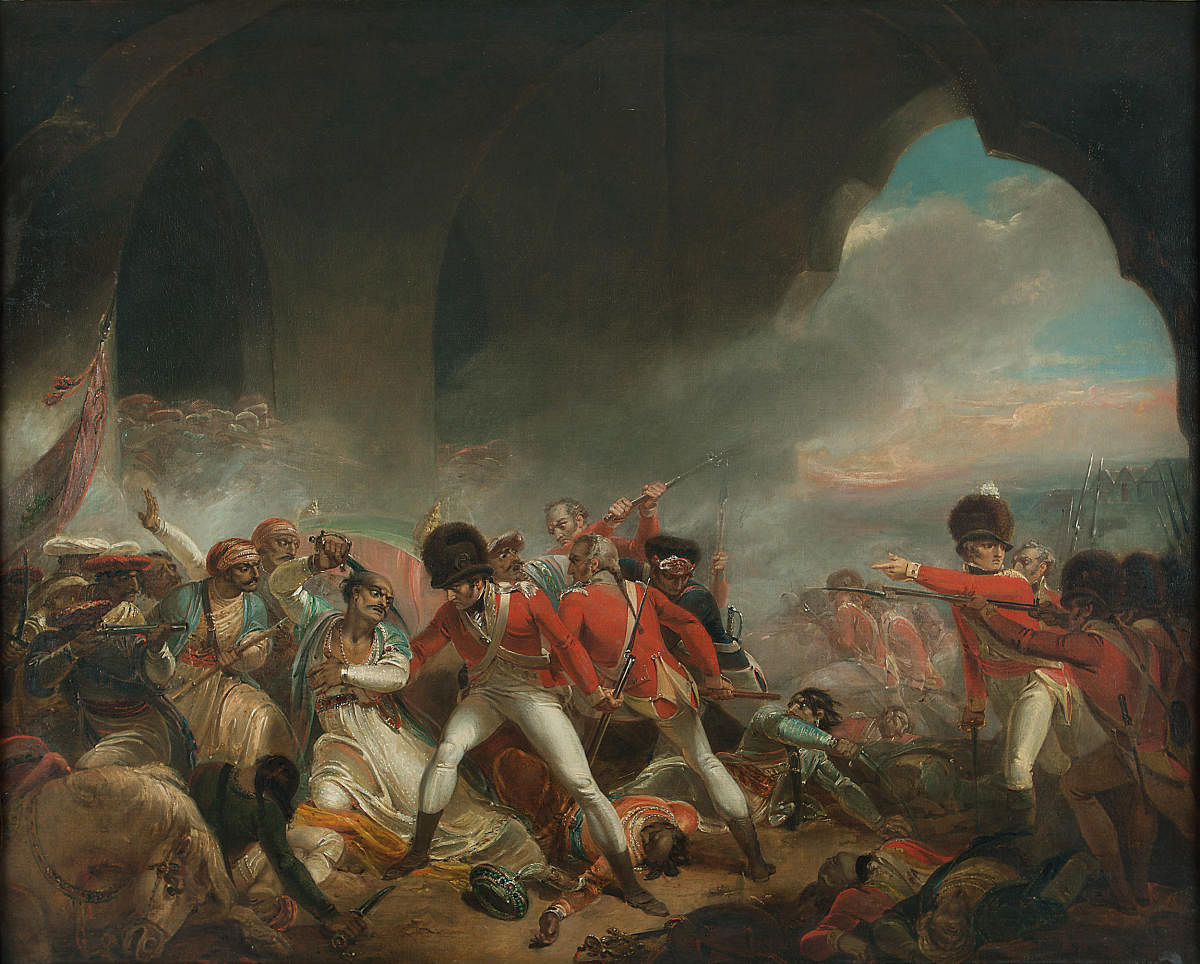
The DAG gallery’s new exhibition, ‘Tipu Sultan: Image & Distance’, currently on in New Delhi, brings to India pieces of British art mostly created from the East India Company’s perspective, at a time when the name Tipu Sultan evokes a myriad range of emotions.
Curated by renowned author Giles Tillotson, the DAG exhibition is showcasing over 90 artworks, depicting war scenes and landscapes, among others, as well as three newspapers from 1799-1800. All of the pieces of art have been purchased by DAG at auctions and sales in the UK and the USA over the past several years.
According to curator Tillotson, who is Senior VP (Exhibitions and Publications), DAG, “The works and the attitudes that they are shown to embody, originally directed towards a British public, are here presented for scrutiny for the first time specifically to audiences in India.”
The name Tipu Sultan can indeed divide a room full of history enthusiasts into two sections because of his controversial reputation. “What does Tipu Sultan mean to people in India today? What did he stand for? Some people idolise him while others are fiercely dismissive of his contribution. What cannot be disputed is that he was the most formidable foe the British faced in India. Yet, he is not accorded the same respect as others who took up arms against the British in later times, such as the Rani of Jhansi or Subhash Chandra Bose. How these images are interpreted in India today is what this exhibition explores,” says Ashish Anand, MD and CEO of DAG.
Changing perspectives
One of the most crucial pieces of art was a major oil painting by Henry Singleton depicting ‘The Last Effort and Fall of Tippoo Sultaun’. Made by a British artist for British audiences, the painting had remained in Britain since the time of its making, shortly after the event that it depicts that occurred in 1799. In the painting, Tipu is shown in the last instant of his life, sinking against overwhelming odds.
Through this scene, Singleton aimed to showcase the British soldiers as heroic, successfully defeating Tipu.
However, talking about the imagined scene in Singleton’s work, Tillotson said, “One is to imagine that the unseen right hand of this fierce soldier is plunging a dagger into the side of Tipu. But I’m gonna add a note which none of us have dared to say. This is not the whole story. You can’t see the dagger at all. So is that what he’s really doing?”
“One version of the story from the English side suggests that the man who killed Tipu was, in fact, in the process of trying to steal his jewels. To me, Singleton is saying that the man who killed Tipu is not a heroic soldier or a valiant assassin, he’s a thief,” he added.
Other leading artists such as Mather Brown and Robert Ker Porter have also produced and displayed many large canvases depicting such turning points as the surrender of two of Tipu’s sons to Lord Cornwallis as hostages in 1792, the siege of Srirangapatna and the death of Tipu Sultan in 1799 at the close of the siege, without ever having visited India. Painted based on British records and through imagination, they appealed to the voyeuristic interest the British had in stories of British triumphalism, greatly enhancing the artists’ reputations and incomes.
To put these views and objects in a wider context, the exhibition includes some works by Indian artists made around the same time.
Among the maps, watercolour paintings, portraits and newspapers, there are two painted wooden carved tiger figures on display that were likely produced in Mysore at the time of Tipu Sultan or later. These were significant as Tipu Sultan was also popularly called the Tiger of Mysore.
The exhibition also displays the EIC medal, known as the Seringapatam Medal, or Sri Ranga Pattana, which was awarded to all British and Indian soldiers by the Governor-General of India for their victory in the Fourth Anglo-Mysore War of 1799. The medal highlights the defeat of Tipu Sultan, displaying the British lion trampling a tiger, the emblem of Tipu’s reign.
The exhibition is on at The Claridges, New Delhi till September 30